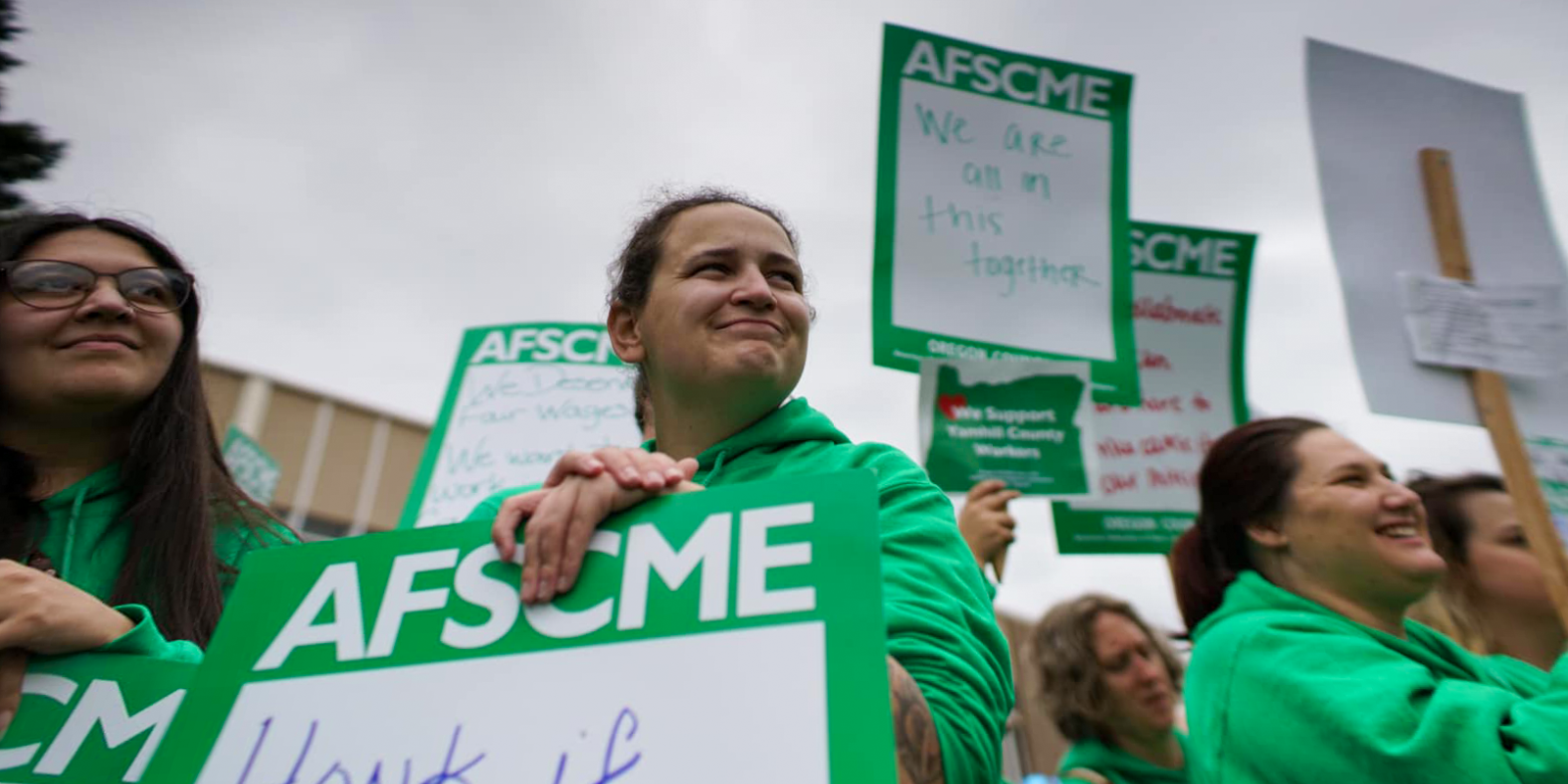Union momentum remains strong, with 2023 seeing more major strikes than in the last two decades.
In 2023, there were 33 major work stoppages, according to the report by the U.S. Bureau of Labor Statistics (BLS). Some 458,900 workers were involved in those work stoppages, including AFSCME members.
“It should be no surprise that workers are taking collective action to improve their pay and working conditions — but we should be asking why it is happening now,” the Economic Policy Institute said in an analysis of the data. “The U.S. economy has churned out unequal income growth and stagnant wages for the last several decades.”
The BLS defined a “major work stoppage” as one involving 1,000 or more workers and lasting at least one shift during the work week. The largest number of major work stoppages before last year had been 39 in the year 2000, according to the agency.
The last few years have seen a wave of worker activism in both the public and private sectors.
Remember Striketober? In October 2021, some 25,000 workers across the country participated in strikes, including 10,000 at John Deere and 1,400 at Kellogg’s. That month, some 18,000 AFSCME members who work for Kaiser Permanente in Southern California voted to strike, a decision that helped them reach an agreement with their employer.
In 2022, union momentum continued. According to Cornell University’s Labor Action Tracker, there were 424 work stoppages that year involving some 224,000 workers. That was an increase of approximately 52% in work stoppages from the year before.
AFSCME members across the nation were extremely active making their voices heard in 2023, and achieved historic victories: Front-line health care workers in Hawaii ratified a new, three-year contract after a nearly two-month strike; school employees in southeastern Ohio also ratified a new contract after a 12-day strike; city workers in San Jose, California, reached an agreement with their employer after a near-unanimous strike vote; and workers of Yamhill County, Oregon, reached an agreement after a five-day strike.
Those are just a few examples of the collective bargaining strength of AFSCME members last year. The surge in worker activism comes at a time when union favorability remains high and more Americans want unions to grow stronger.
Among the highest profile strikes of 2023 were those involving 75,000 Kaiser Permanente health care workers, who were involved in the largest recorded health care strike in U.S. history; 12,000 auto workers members of United Auto Workers (UAW) against the Big Three manufacturers; and more than 70,000 Hollywood writers and actors (members of two separate unions, the Writers Guild and SAG-AFTRA) against the Alliance of Motion Picture and Television Producers.
